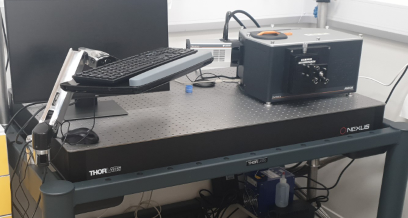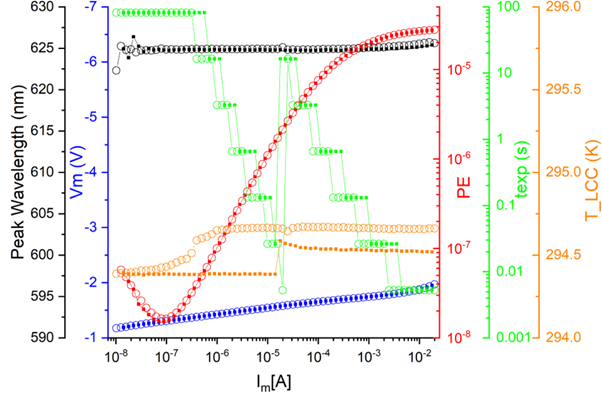 Over the past 20 years there has been a shift towards a greener and zero carbon future in the lighting and display sectors, enabled by improvements in LED material, efficiency and costs. Efficiency measurements have been, and will continue to be, key to this ongoing trend, as well as tackling the technological problems of efficiency droop in high power LEDs and continuous material improvements for efficiency and colour.
Over the past 20 years there has been a shift towards a greener and zero carbon future in the lighting and display sectors, enabled by improvements in LED material, efficiency and costs. Efficiency measurements have been, and will continue to be, key to this ongoing trend, as well as tackling the technological problems of efficiency droop in high power LEDs and continuous material improvements for efficiency and colour.
Although LED device performance can be quantified by several basic room temperature measurements such as current-voltage (I-V) and light-current (L-I), often found on produce datasheets, it is limited how useful these are towards informing research improvements for the production of optoelectronics, LED lighting, LED display, consumer electronics, augmented reality and UV water purification. This is because there are simply too many factors to deduce useful information from these measurements. Measuring device efficiencies (particularly the internal quantum efficiency) gives a more fundamental look at the underlaying material and physics. These measurements are essential for the research and development process, particularly fabrication and epilayer design, in order to improve LED efficiency, boost ohmic performance and understand efficiency droop.
Temperature dependent electro luminescence (TDEL) is widely considered the most direct and standard method to study LED quantum efficiency, and is particularly useful at the material synthesis and fabrication stages of research and development. This is specifically because it involves cryogenic cooling which is a direct means to passivate and study non-radiative Shockley-Read-Hall or Auger recombination centres in the active layer, by respectively freezing or eliminating them at low temperature (T < 20 K). The cryogenic passivation of these non-radiative processes leads to the common assumption (in the TDEL method) that the LED carrier injection efficiency and radiative efficiency for T < 20 K can be assumed to be 100%, and all other temperature measurements are scaled relative to this. In this technique a second theoretical assumption, which is also crucial to ensure in practice, is that the light collection efficiency remain constant throughout the whole current and temperate range. Alternative room temperature techniques, although experimentally much simpler than TDEL, can be mathematically complex with several fit parameters, further assumptions and material constants which may not be known in new (or complex) structures and materials1.
Since the TDEL studies inherently includes cryogenic characterisation, spectral, transport and power efficiency, of the LED devices it may help expand opportunities in new markets requiring LEDs to operate at reduced or cryogenic temperatures, such as quantum computing and cryogenics.
The main drawback of TDEL is that it requires access to resource intensive optical and cryogenic facilities and expertise. We have recently developed, and are continuing to improve, our commercial capability to perform these specific measurements flexibly, promptly and accurately. In our setup, the device optical spectrum (or power) is acquired at the desired predefined current and temperature setpoints using our automated measurement software. Acquired data is then analysed to produce relative power efficiency plots and spectra. The customer can then interpret these to optimise the research and development process.

Example data produced on a commercially available RED LED device. This shows the Peak emission wavelength, measured voltage, relative power efficiency, optical exposure time and sample package temperature all as a function of the applied current.
[1] : Shim, J.I. and Shin, D.S., Measuring the internal quantum efficiency of light-emitting diodes: towards accurate and reliable room-temperature characterization, Nanophotonics 2018; 7(10): 1601–1615, doi: https://doi.org/10.1515/nanoph-2018-0094